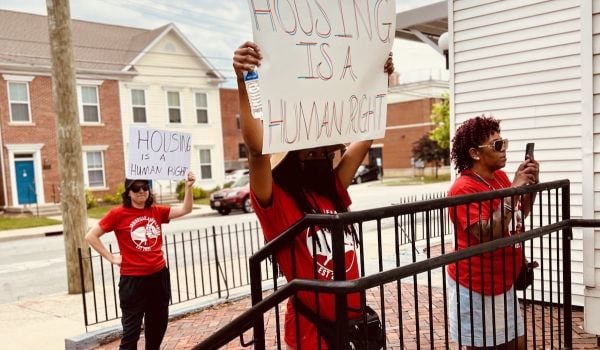As major cities in the U.S. become increasingly unaffordable, unsubsidized affordable housing is ever more crucial in meeting the demand for affordable housing. Unsubsidized affordable housing refers to Class B and C housing built in the 1960s through 1980s, which is generally affordable for middle- and low-income households. Rents at these buildings are typically below market due to factors such as the age, condition, outdated design, or location of the building, or sometimes due to rent control laws that may govern an area.
Unsubsidized affordable housing often ends up serving as “workforce housing” for middle-income workers such as teachers, accountants, office managers, and nurses. However, demand for these units is not limited to just this income bracket. These units are also in great demand from high-income workers looking to save a buck, as well as low-income earners who are unable to access the limited supply of subsidized affordable units.
Despite the huge demand, the multifamily industry takes more than 100,000 of these units out of the market per year. Either they are demolished so a developer can build something new on the land or the existing building is converted to a luxury building. Although maintaining unsubsidized affordable housing as workforce housing guarantees a developer stable cash flows through good and bad times, a developer can generally make a much better return by converting the property into luxury units.
On the other hand, a developer may decide to convert unsubsidized affordable housing to a subsidized affordable housing property in order to access state and federal low-income housing tax credits (LIHTC). Doing so, however, restricts some of the units to tenants earning 60 percent or less of the area median income (AMI) — which is beneficial for low-income individuals but reduces the amount of affordable housing available for middle-income earners.
So, what are some reasons a developer would choose to maintain unsubsidized affordable housing as workforce housing? One reason is cheaper debt: Government-sponsored entities such as Freddie Mac offer favorable loan terms to workforce housing projects. Another reason is that workforce housing is highly favored by communities and governments because it usually does not displace existing residents. And it is much more flexible than LIHTC projects, which have stringent renovation, rent, and requirements for how long units must remain affordable.
Legal and economic factors also play a role in making workforce housing projects relatively more attractive. A number of California cities are currently considering or have recently adopted rent-control laws. These laws often contain clauses that limit rent increases or require landlords to compensate tenants for relocation expenses associated with such rent increases, thereby reducing revenues and increasing the costs of luxury housing conversions. Moreover, if the economy slumps next year, more people will need less expensive housing if we assume they will lose their jobs or suffer pay cuts. This means property owners may want to consider maintaining their buildings as unsubsidized affordable properties, rather than converting them.
To prove this idea out, we prepared a case study to analyze when a workforce housing project achieves better returns than a luxury or LIHTC conversion. We modeled our assumptions using a hypothetical 100-unit unsubsidized affordable multifamily property located in Glendale, California (based on an actual listing on Loopnet.com). Glendale is currently losing unsubsidized affordable apartments as developers convert them to luxury units, and in February of this year, passed a renters’ rights law, fueled in part by active tenants’ rights groups. It’s not rent control, but under the new regulations, landlords seeking to raise a tenant’s rent more than 7 percent within a 12-month period must offer that tenant relocation assistance. If a tenant chooses to move due to such rent increases, a landlord must compensate the tenant at a cost of two times the area “Fair Market Rent” (as determined by HUD) plus $1,000.
We wanted to see how this law would affect luxury conversions. We modeled two scenarios: a “Pre-February 2019” scenario and a “Post February 2019” scenario. In the Pre-February 2019 scenario, before the relocation assistance law passed, a luxury conversion project achieved far greater returns than maintaining the property as workforce housing or converting it to LIHTC housing. This was due to the drastic rent increases a luxury developer could implement without having to compensate tenants for relocation.
In the post-February 2019 scenario, maintaining the property as workforce housing achieved better returns than both the luxury and LIHTC projects. The luxury conversion was far less attractive due to the substantial costs of relocating tenants who could not afford the higher rents. The LIHTC housing project was left with a financing gap even after accounting for tax-credit equity and debt financing. Maintaining the project as workforce housing resulted in returns of around 20 percent due to stable occupancy and modest rent increases after lightly renovating the property. Returns on the workforce housing project could even be improved by getting a real-estate tax exemption for the property or shortening the hold period.
While landlords aren’t happy about the relocation assistance law (and neither are tenants’-rights advocates who wanted true rent control), this case study shows that the law is in fact able to preserve affordable units that could otherwise have been converted to luxury apartments. But even here, a developer could still choose to do a luxury conversion — and many developers who want to renovate workforce housing are not able to be competitive when bidding on properties, because prices are so high. That means additional intervention is required to maintain the dwindling numbers of unsubsidized affordable units. A number of cities, including San Francisco, Atlanta and Los Angeles, have begun implementing innovative programs to preserve the remaining supply of these units.
For example, the City of Los Angeles recently began funding the preservation of unsubsidized affordable housing for workforce housing. The City provides a per-unit subsidy to help acquisition and rehabilitation, working with the developer to get a property-tax exemption. The money is then used to make light renovations to the property, and the subsequent rents charged must be affordable to those who earn 80 percent or less of area median income (which, in Los Angeles, is about $104,000 for a family of four). So far, one of the main challenges has been the substantial costs associated with upgrading older buildings – costs that are difficult to assess prior to construction. The City is currently examining how to reduce costs and streamline the funding and renovation processes.
Should other cities follow suit with similar programs, special consideration should be paid to the costs of renovating old properties. In addition, strategies such as real-estate tax exemptions or relaxing certain building standards should be explored, in order to ensure that the remaining supply of unsubsidized affordable housing does not disappear forever.
This article is adapted from Saraf’s recent Affordable Housing Policy Brief, “Naturally Occurring Affordable Housing Is Disappearing,” published by UCLA Ziman Center for Real Estate.
Maya Saraf is a graduate of the UCLA Anderson School of Management program.
















